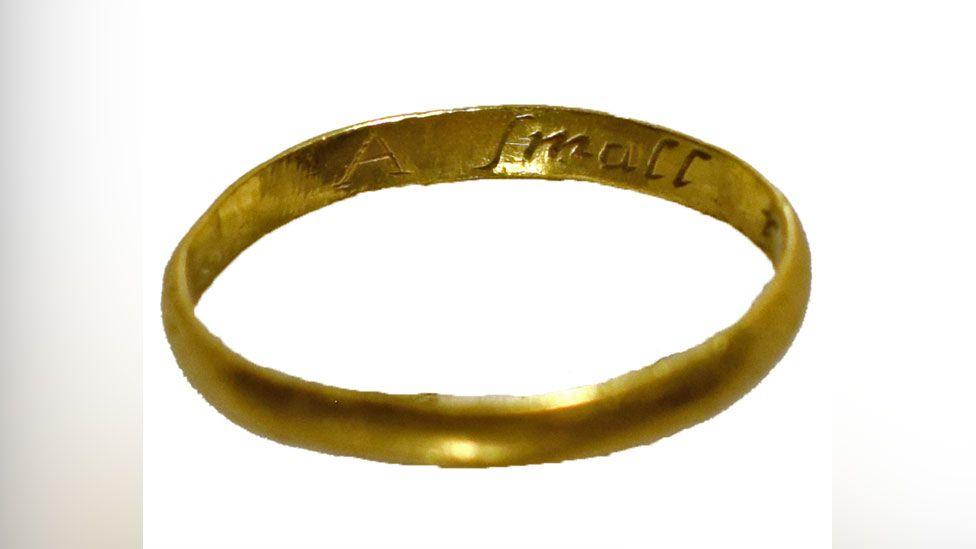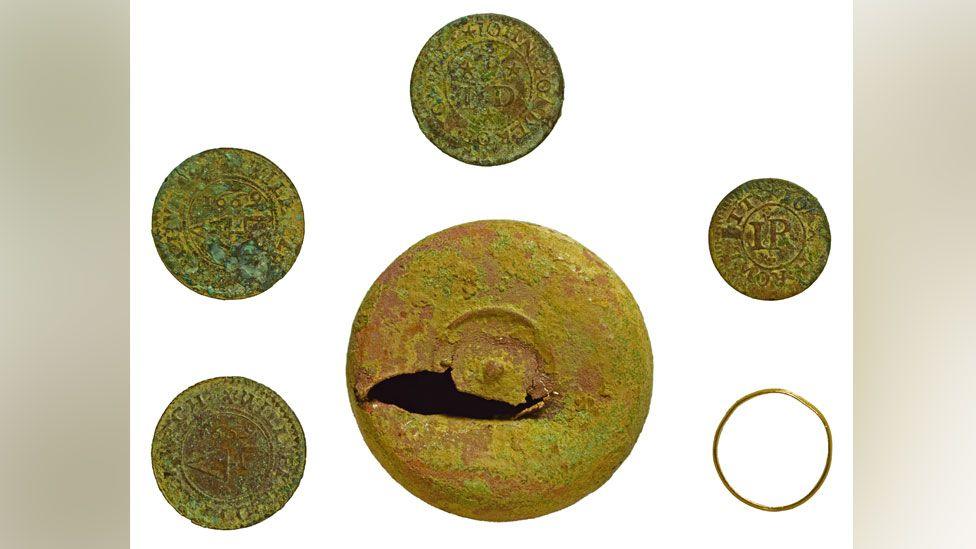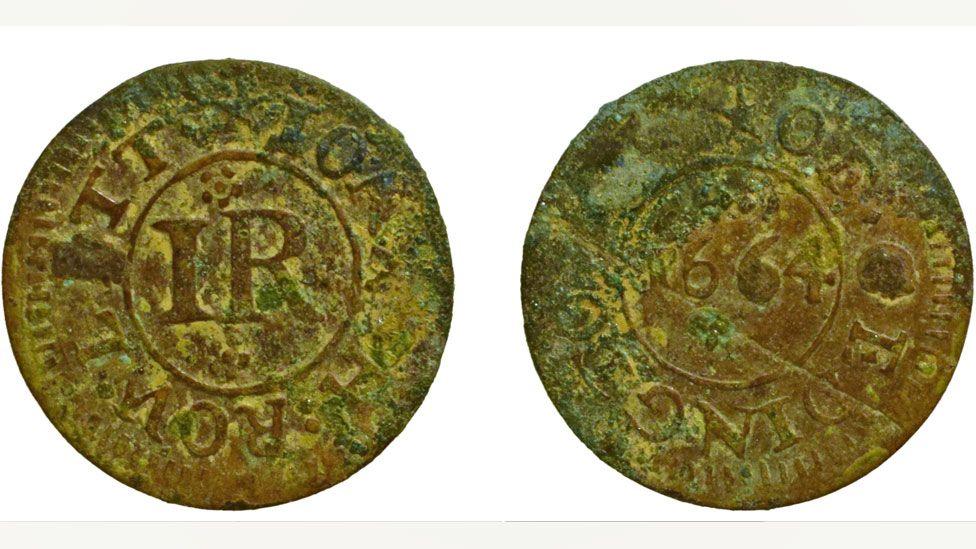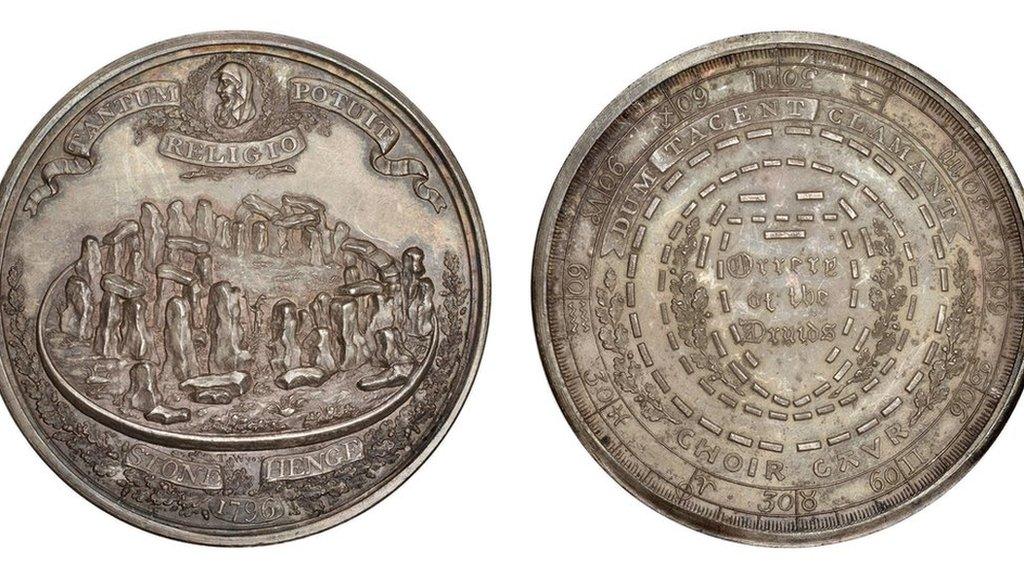'Saddest story' for owner who lost ring in 1600s

The ring has been engraved inside with a line saying: "A small remembrance."
- Published
A gold posy ring discovered in a 17th Century token box was probably stored there for safekeeping only to be lost after all, making it the "saddest story", a coin expert said.
The small copper container, found at Dingley between Market Harborough and Corby, also held four trading tokens - a type of small change currency issued by merchants to keep the local economy afloat.
Adrian Marsden said the box was only the 10th one to be found in the country, with all of them made by the same London manufacturer.
The discovery offered "insight into the businesses of very ordinary people", said Northamptonshire's finds liaison officer Eleanore Cox.

The ring was found by a detectorist inside a token box, which appears to have been damaged by a plough, alongside four trading tokens
She said the detectorist who found it initially thought it was a Victorian or 20th Century door-knob and took it home for a wash.
"Thank goodness he did, because once it was clean it started rattling - and then out popped the ring."
Dr Marsden, a numismatist from the Norfolk Historic Environment Service, said: "We all know how rings can get lost – they can slip off fingers that have shrunk ever so slightly in cold water."
Yet, despite apparently tucking it away in the box for safekeeping, the owner still managed to lose it, making it "the saddest story of all", he said.

The box's screw thread locking mechanism had corroded over the centuries in the ground, meaning it could not be opened until washed
Token or money boxes have a very sophisticated screw thread construction, which has led to them being misdated to the 19th Century, he explained.
This was because screw threads "were hardly seen" before the 18th Century Industrial Revolution, when new technology made them easier to produce.
However, he said the Northamptonshire find was "incredibly similar" to nine others, "and now it very much looks like a workshop in London had the know-how to make these things for a brief period in the 1660s".

The tokens in the box were issued by William Roweth from Langton; John Ponder from Rothwell; and Ionath Rowlett from Geddington (his token pictured above)
Trading tokens were commissioned from the Tower of London mint, where the country's official coins were struck.
Ms Cox said: "Tokens were pivotal to day-to-day life, used by people to buy bread and candles and clothes, and offer not only insights into the businesses, but about the very real difficulty of shopping when there is a lack of small denominations.
"I genuinely feel bad for whoever lost it [the box], and there must have been a bit of heartbreak when the ring was also lost."
The discovery is going through a process where a coroner decides whether it can be classed as treasure. If so, a museum usually gets first refusal over whether to store it.
Get in touch
Do you have a story suggestion for Northamptonshire?
Follow Northamptonshire news on BBC Sounds, Facebook, external, Instagram, external and X, external.
You may also be interested in
- Published14 January 2024

- Published22 September 2021

- Published23 October 2023
